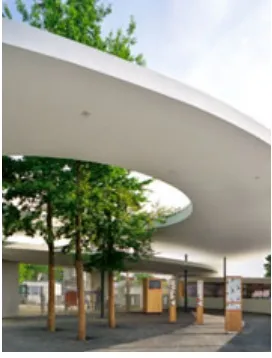刊首语

历史上的设计多是依据以往经验的积累进行,自20世纪初,许多西方设计师不满足于以经验为基础的设计方式,开始研究建立在理性和科学分析基础上的设计方法,理性的设计倾向也在20世纪60、70年代有进一步的发展,这以后许多设计学科都从艺术走向了艺术与科学的结合,风景园林也从之前的作为创造和保存人类居住环境和自然景色的美的艺术,成长为有关土地的分析、规划、设计、管理,以及保护和恢复的艺术和科学。
有关设计方法的科学研究成果更是层出不穷。1977年,美国建筑师和理论家亚历山大出版了一本影响很大的书《A Pattern Language-Towns·Buildings·Construction》,中文版于 2002年出版,译名为《建筑模式语言》。书中亚历山大以尺度从大到小排列,提供了253个有关城镇、邻里、住宅、花园、房间等模式,对每一种模式都定性、有时也定量地进行了阐述,提供规划和设计等方面的参考。亚历山大希望通过这种模式语言,建立一整套完整的设计指导,使得设计者可以很快地把握不同场所良好设计的本质,避免在设计中犯一些低级错误。
作为一本指导手册,《建筑模式语言》对于初学者认识和判断设计的确有直接的帮助,对于非专业的人认识了解城市和建筑设计,指导自己的住宅、家居和花园的设计也有很大益处。许多人曾经人为,借助于模式语言,设计师可以利用前人的经验和智慧,做出优良的设计方案,达到事半功倍的效果。然而现实是,就像学习一门语言,了解和掌握了词汇和语法并不意味着能够随心所欲地写文章,更不一定能写出好文章。亚历山大的理论实际上是对场所的抽象化和简单化,模式语言能帮助人们更准确地判断,可惜并没有什么好的设计是依据他的模式语言理论完成的,即使他本人的设计也并不成功。看来设计绝不像数学一样,通过定律定式就能推导出结果。一切设计都是有法无式的,亚历山大提出的更应是一种方法,而非一种模式。
“Pattern Language”在亚历山大的书中是最关键的词汇,中文版把它翻译为“模式语言”,不知亚历山大是否认同,但中英文许多词汇是没法一一对应的,考虑到书的内容,翻译成“模式语言”还是比较恰当的。
以我的观点,什么东西一旦成为“式”,就更容易分类、更容易识别、更容易判断,似乎也更加容易进行科学分析和研究,但却往往会成为艺术的大忌,同样也是设计的大忌,因为设计学科多是艺术与科学的结合。“式”可以使得初学者更好地掌握,可以使得非专业人员更好地理解,然而却经常会带来设计的教条和僵化。我以为,在设计中还是不要有什么“式”更好。我想西方优秀的设计师也不希望有设计“pattern”,这或许就是亚历山大的书在畅销一段时间后现在少有人提及的原因。
本期的主题是景观图式语言,其中图式语言对应的英文词汇是“Pattern Language”。我确信,如果把亚历山大的书翻译成“建筑图式语言”,作者是不会认同的,尽管他的书里有不少照片和插图,但这些都与图式没有多大关系。
设计理论常常呈现出百家争鸣的状况,每一种理论在一个特定的条件下都有自己的逻辑体系,不能简单地用对或者错来评价设计领域的任何理论,我们更应该研究每种理论产生的背景,以及研究者得出结论的针对性。本期有关景观图式语言研究的文章,都具有一定的研究性,相信读者在阅读后会有自己的思考和认识。
2015年2月18 日
PREFACE
Most designs in history were conducted by experience.Since the 1900s, many western designers started to feel dissatisfied with such experiential-based design method and set about working on the establishment of a design approach built on rationality and scientifi c analysis. When it came to the 1960s and 1970s, rational design was further developed and later on many design disciplines were shifted from pure art to a combination of art and science. Landscape Architecture was therefore developed from an art of creating and preserving human settlement and natural beauty to the combination of art and science concerning the analysis, planning, design and management of lands.
The scientific research achievements of design methods are even more abundant. In 1977, architect and theorist Alexander published a book of far-reaching significance, A Pattern Language- Towns · Buildings ·Construction (The translated version was published in 2002 in China, named “建筑模式语言”), providing 253 design patterns concerning towns, neighborhoods,residences, gardens and rooms from large to small scales.Each pattern is explained qualitatively and sometimes quantitatively, and references for planning and design are also provided. Alexander wished to create a complete set of design guidance through such pattern language so that designers can comprehend the essence of different sites to avoid simple mistakes.
As a guidebook, A Pattern Language- Towns ·Buildings · Construction is indeed helpful to beginners to understand and estimate designs, and to those nonprofessionals to understand urban and architectural design and to direct the design of their own houses or gardens.Most people once believed that with pattern language,designers can make fi ne design proposals more effi ciently from the experience and wisdom of predecessors. Truth is, just as learning a language, mastering the vocabulary and grammar doesn’t mean one can writing an article at will, let alone a good piece of article. Alexander’s theory is in fact the abstraction and simplifi cation of sites. Yes, it is true that pattern language can help one to judge more accurately, but pitifully there were few good designs being done according to his theory, even his own designs were not always successful. It appears that design is not like math, mastering the laws or formulas can not deduce an expected result. Every design is of means but forms.What Alexander put forward is more a method rather than a pattern.
“Pattern Language” is the most pivotal phrase in Alexander’s works. In the Chinese publication, it is translated as “模式语言 ”. I am not sure if Alexander agreed such translation, but it is impractical to match every word between English and Chinese. Considering the content of the book, I think “模式语言 ” is appropriate.
From where I stand, I think that once something becomes a “pattern”, it becomes more easy to be classifi ed, understood, judged, analyzed and studied; but it also often becomes a taboo for art as well as design because design disciplines are mostly the combination of art and science. A “Pattern” is helpful to beginners and the non-professionals to understand, but it could lead to dogmatism and inflexibility in design. In my opinion, it is better to not include any “patterns” when designing.I think most outstanding designers from the west don’t want “pattern” in the process of design either. This might be the reason why there are few mentions of Alexander’s book after it was popular for a while.
The topic of this issue is landscape pattern language,among which the “pattern language” is translated as “图式语言 ”. I am convinced that if Alexander’s works were translated into “建筑图式语言”, he wouldn’t have been agreed, despite the fact that there are a lot of photos and illustrations in his book.
There always countless branches of theories for the fi eld of design, each of which is of its own logical system under certain circumstances. It is not suitable to judge any of the theories simply by rights and wrongs. Instead,we should study the background of every theory and the pertinence of its conclusion. In this issue, every piece of article concerning the research of landscape pattern language is of particular research value, I believe it is benefi cial to the establishment of your own thoughts and understandings in this area.

